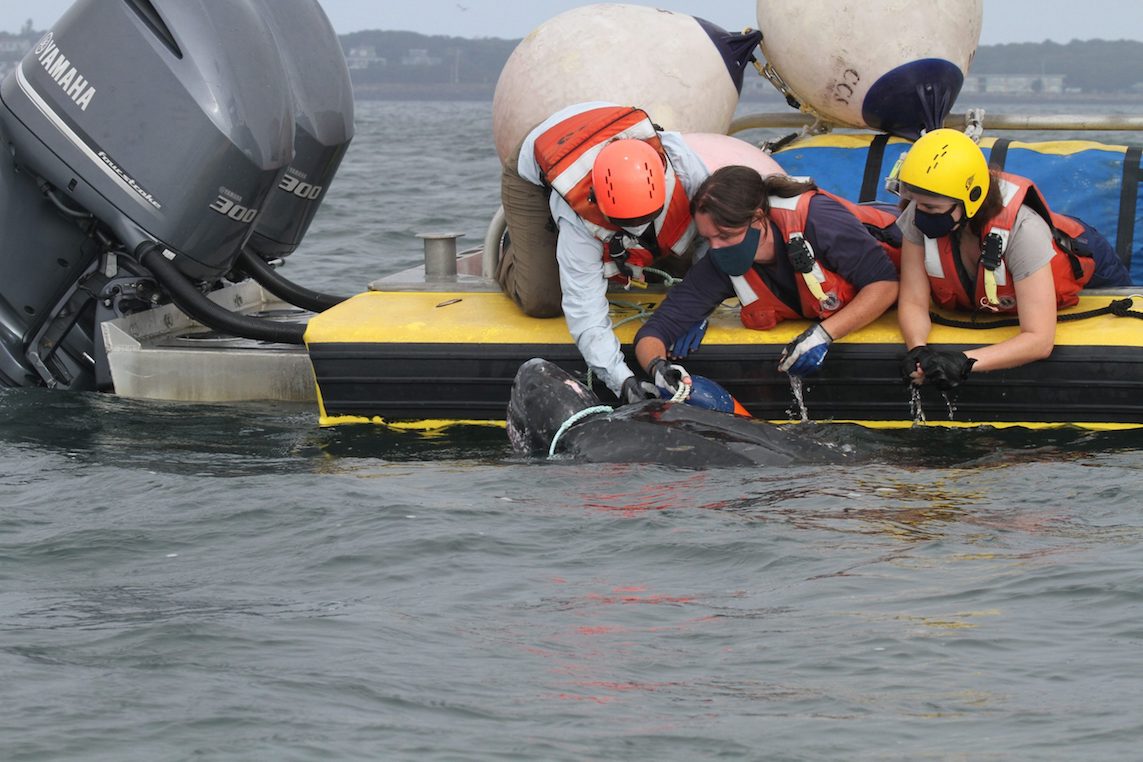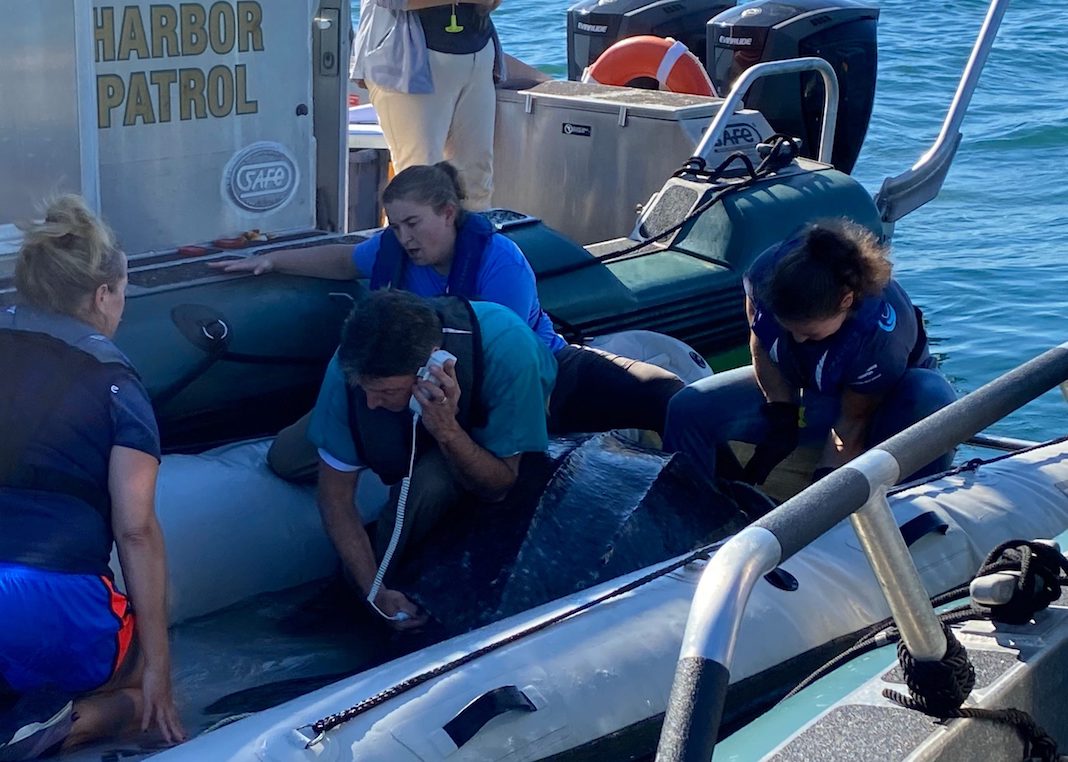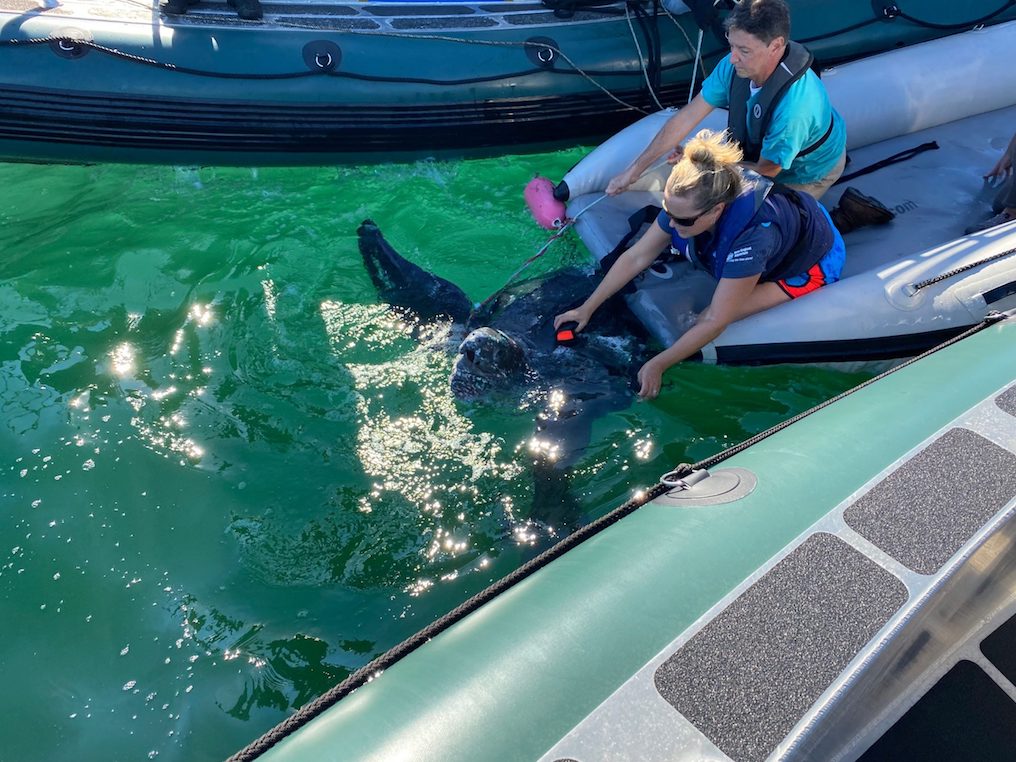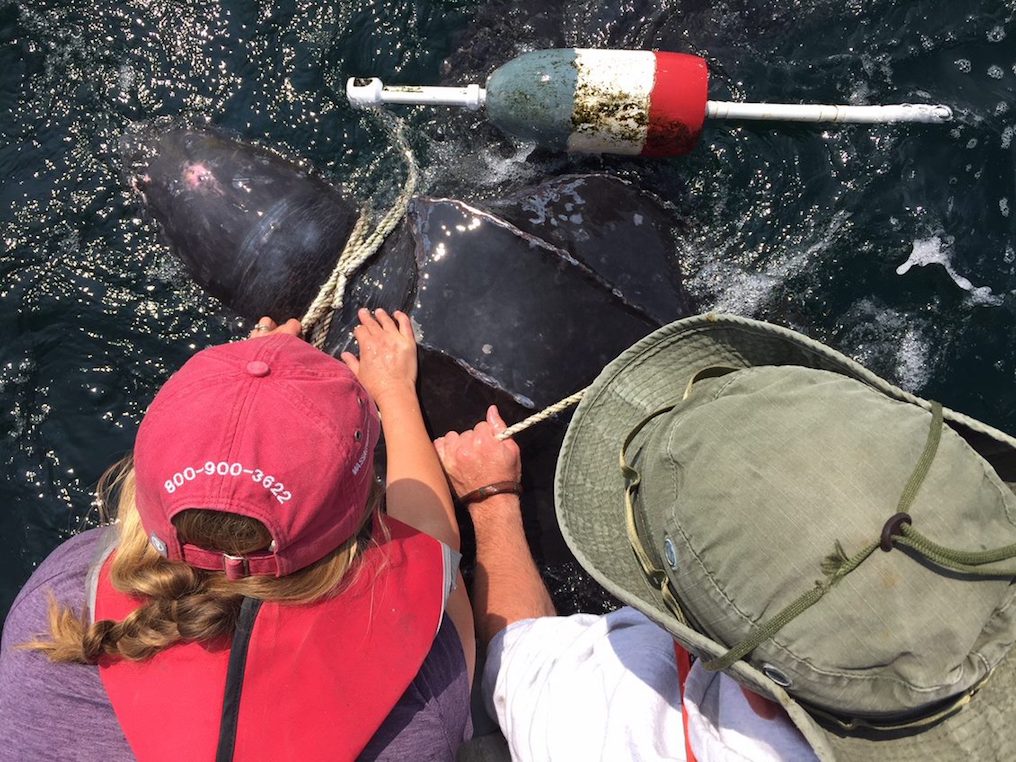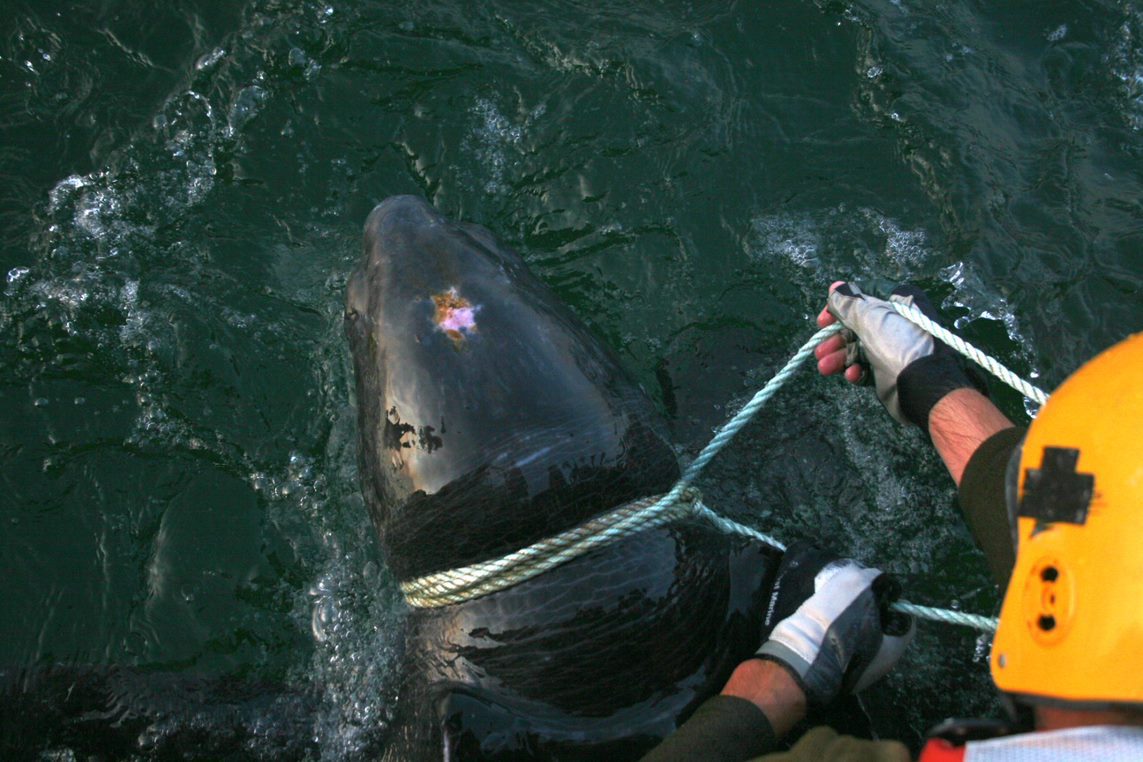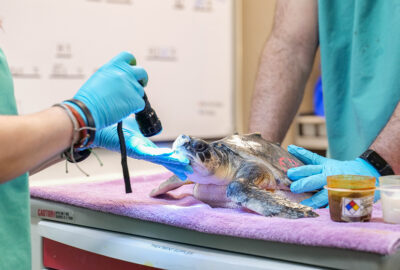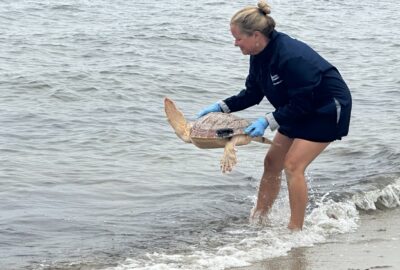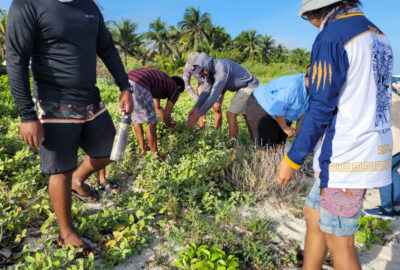Analyzing Leatherback Entanglements
New Leatherback Turtle Study Analyzes Entanglement Data and Offers Solutions
By New England Aquarium on Thursday, February 24, 2022


By Jacquinn Sinclair
Helping an animal in distress might seem like the right thing to do, but when it comes to entangled marine animals such as leatherback turtles, providing aid instead of reporting the incident could prove fatal.
A recent study led by Dr. Kara Dodge, a research scientist at the Anderson Cabot Center for Ocean Life (ACCOL), and co-authored by Dr. Charles Innis, ACCOL associated scientist and director of Animal Health at the New England Aquarium, found—among other things—that reporting entanglements instead of attempting to help is critical for saving lives.
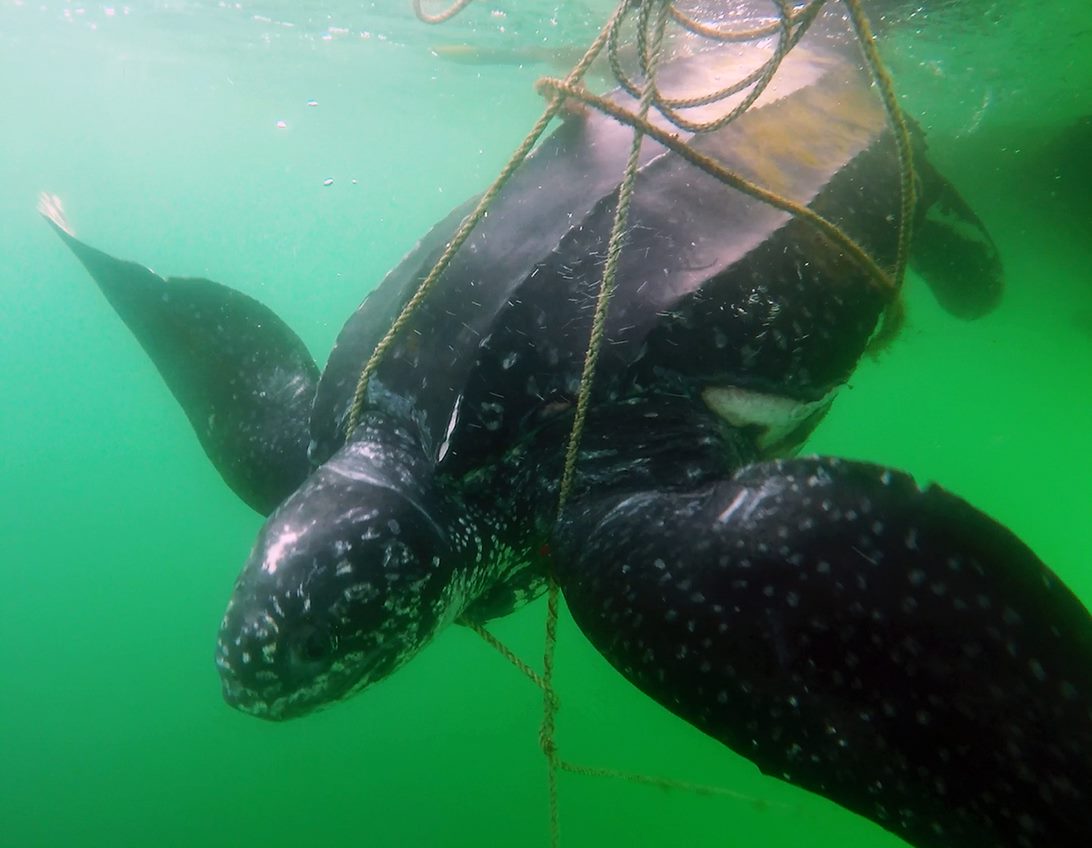
The Leatherback turtle entanglement in fixed-gear fisheries study –with research conducted by a collaborative team of scientists from the Center for Coastal Studies, the National Oceanic and Atmospheric Administration (NOAA), and the International Fund for Animal Welfare—analyzed 15 years of sea turtle entanglement data off Massachusetts and found that nearly all (272 out of 280) entanglements involved leatherback turtles. Over 60 percent of the time, these entanglements were reported by recreational boaters to a trained, authorized network of responders, leading to successful disentanglements.
For instance, Laurie McColgan spotted an animal struggling in the waters of Nantucket Sound while boating with her husband in October. Unsure of what to do, the couple called Ship Shops, a full-service marina, and spoke to a manager about what they saw.
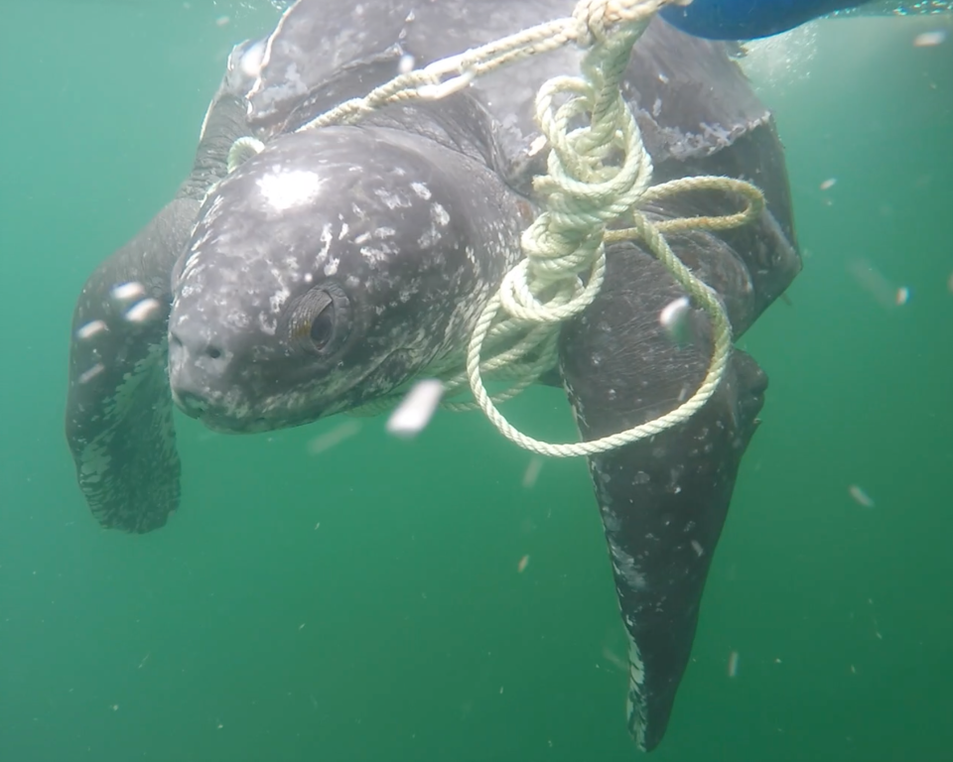
The marina manager called the Center for Coastal Studies and the Aquarium. Drs. Dodge and Innis were called in to help. After several hours, McColgan says, the animal, a sea turtle was disentangled.
“The turtle pulled right up to our boat and stuck its head out of the water before swimming off, ” McColgan shares.
In the last two years, many boaters have partially disentangled turtles on their own and later reported the events. Doing so, however, prevented the turtles from being fully freed and documented. And typically, partially disentangled turtles do not survive.
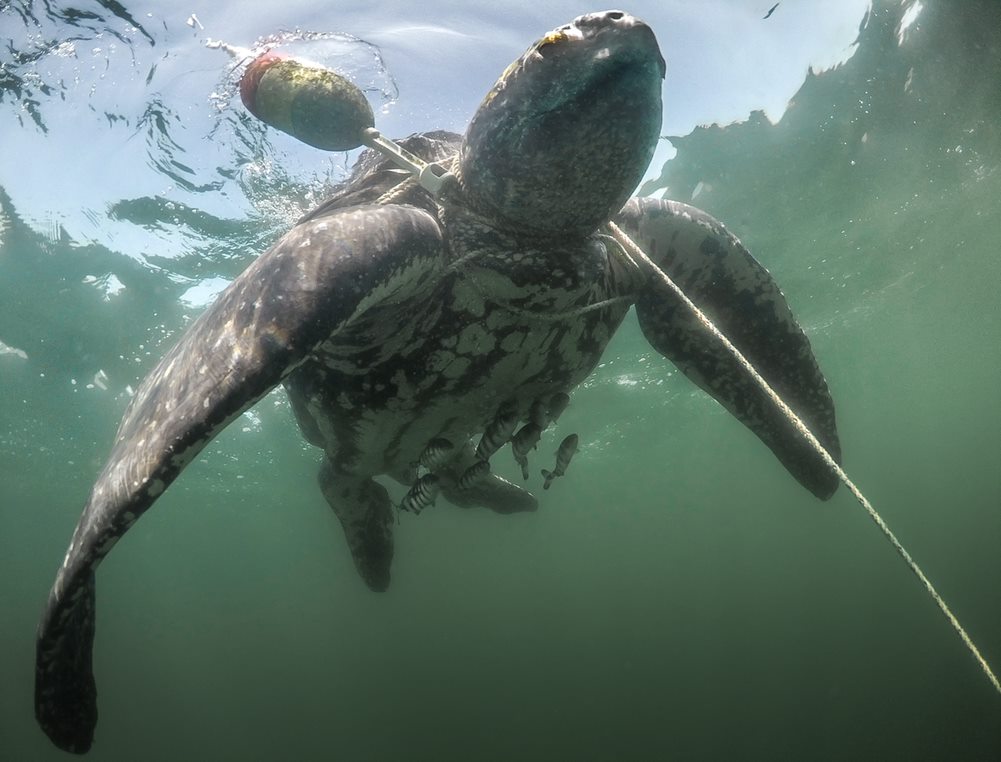
Numbers from the study—conducted to better understand sea-turtle bycatch and mortality—indicate that most turtles were caught in actively fished commercial gear, challenging the long-held notion that most marine life entanglement occurs in ghost gear or debris. In every case, the turtle’s neck and or front flippers were involved, with varying visible injuries. Forty-seven of the leatherbacks were dead in gear, while 224 were alive at first sighting, and one case was unknown. Post-release monitoring suggested turtles can survive for days to years after disentanglement, but data was limited.
Over the last three generations, the global population of leatherbacks, the largest sea turtle in the world, has declined 40 percent, according to NOAA estimates. The leatherback turtle population decline in the Northwest Atlantic led to an updated status assessment of endangered on the International Union for Conservation of Nature Red List. These turtles face a number of threats including climate change impacts and habitat loss. Some turtles are still hunted for meat and their eggs are collected for consumption. Still, the greatest threat they face globally is incidental capture in fishing gear, which makes bycatch mitigation essential to preserving the leatherback.
Replacing single traps with trawls to reduce the amount of rope in the water and ropeless fishing are just some of the potential solutions that could help.
Read about the other recommendations and more of the study’s findings here.
To report an entangled sea turtle in New England, call 1-800-900-3622 or hail the US Coast Guard on VHF 16.
/
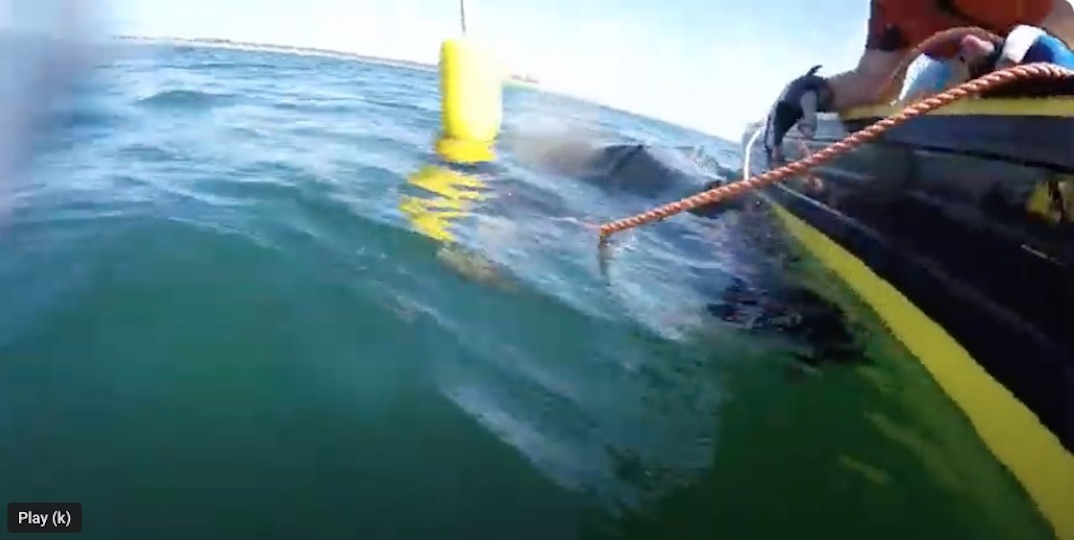
CCS MAER Leatherback
Watch part of the rescue filmed by the Center for Coastal Studies

